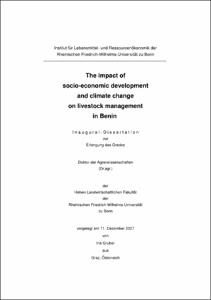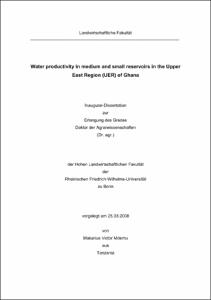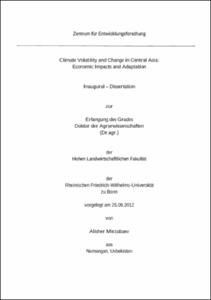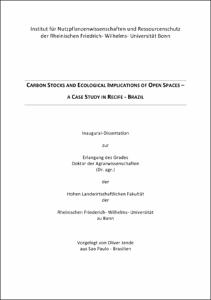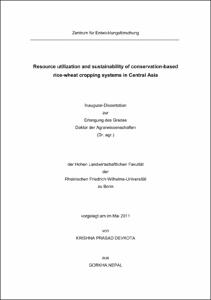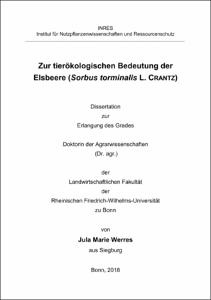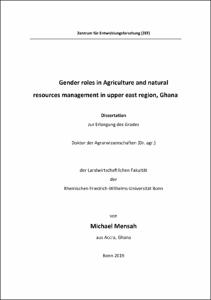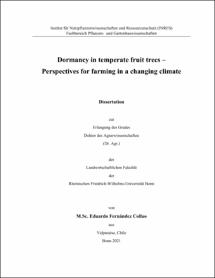E-Dissertationen: Search
Now showing items 1-8 of 8
The impact of socio-economic development and climate change on livestock management in Benin
(2008)
Livestock management is a rapidly changing sector in developing countries due to increasing demand for animal products and changes in the availability of common resources. Moreover, livestock management is important as it ...
Water productivity in medium and small reservoirs in the Upper East Region (UER) of Ghana
(2008)
Improving water productivity (WP) is one important strategy for addressing future water scarcity, which is driven particularly by population growth and potential climate changes. Although an understanding of WP is required ...
Climate Volatility and Change in Central Asia: Economic Impacts and Adaptation
(2013-07-08)
Central Asia is projected to experience a significant climate change, combined with increased weather volatility. Agriculture is a key economic sector and a major source of livelihoods for Central Asia’s predominantly rural ...
Carbon Stocks and Ecological Implications of Open Spaces: A Case Study in Recife - Brazil
(2011-07-14)
The aim of this work is to evaluate the ecological implications of the whole range of urban and rural land use systems from a common perspective focused on carbon stocks and land use change (LUC) in urbanizing areas of ...
Resource utilization and sustainability of conservation-based rice-wheat cropping systems in Central Asia
(2011-08-26)
Excessive and inefficient water use, intensive soil tillage and decreasing soil fertility have caused land degradation and desertification, which are threatening the sustainability of rice-wheat systems in the irrigated ...
Zur tierökologischen Bedeutung der Elsbeere (Sorbus torminalis L. CRANTZ)
(2018-06-14)
Mit der vorliegenden Dissertation soll das ökologische Beziehungsgeflecht der Elsbeere (Sorbus torminalis) erfasst werden, einer in Deutschland seltenen, in zerstreuten, kleinen Populationen vorkommenden Baumart (Fam. ......
The Significance of the Wild Service Tree (Sorbus torminalis L. Crantz) in Regard to Animal Ecology
This thesis aims to document the ecological web of the wild service tree (Sorbus torminalis) – a ......
The Significance of the Wild Service Tree (Sorbus torminalis L. Crantz) in Regard to Animal Ecology
This thesis aims to document the ecological web of the wild service tree (Sorbus torminalis) – a ......
Gender roles in Agriculture and natural resources management in upper east region, Ghana
(2019-11-08)
The Upper East region is one of the poorest regions in Ghana with an estimated 90% of the people living in rural areas being peasant farmers. In many instances, farmers use their land unsustainably thus worsening the already ...
Dormancy in temperate fruit trees - Perspectives for farming in a changing climate
(2021-05-26)
Deciduous fruit trees, which originated in temperate climates, exhibit an inactive period (i.e. dormancy) between late autumn and early spring. This period allows trees to endure the severe winter temperatures usually ...


